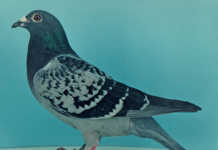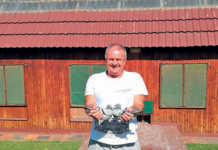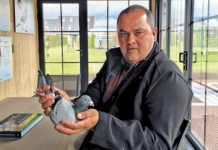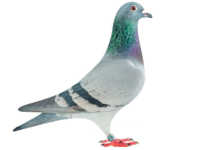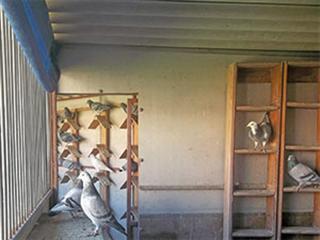
Building a pigeon loft should not be done hastily. First visit a few champion pigeon fanciers and acquaint yourself with the kind of loft suitable for the climatic conditions of your area. Also remember that municipal regulations are applied more strictly in some places than others. You may need to provide an accurate plan of your loft, showing how it will be placed away from fences and buildings, and apply for permission to erect it.
Neighbours are entitled to file a complaint with the municipality if they feel your loft is too close to one of their windows, for example, or they simply don’t like being in close proximity to so many pigeons. So, over and above adhering to municipal laws, approach your neighbours and ask them if they are amenable to your constructing a pigeon loft and are happy with its position. Get them to sign a letter of consent to make it official.
Where to build
If you aim to become a Point’s League Federation or Union Champion, you will need to locate your loft with care. This means, above all, taking into consideration the prevailing weather and winds. It may even mean moving house! In Gauteng, for instance, the annual racing pigeon events are held to the south, with the returning pigeons having to fly northward. Because of the prevailing south-west and north-west winds, the birds are blown towards the east, so tend to enter Gauteng from the south-east.
Fanciers living in the north or west (they are in the minority) are obviously at a disadvantage in this situation, while fanciers in the eastern towns of Alberton or Boksburg (the majority) stand to gain. There are, however, competitive fanciers in Randburg and Sandton, who obtain top results.
But it can be frustrating if you live in these areas and your birds miss out on the top placings because they allow themselves to be blown eastwards before breaking out of the pack to charge all the way back to the north or west. So, if you can afford it and are ambitious, you might want to consider moving to your area’s ‘pigeon paradise’ before you start racing.
Position
The loft itself should be installed far in the back of the garden to provide sufficient landing space for the race team. If your yard is too small, you’ll require a double-storey loft. The loft should face 25° east of north, to enjoy all-day sun. Keep a separate loft for the breeders. Stock loft sections can be part of the race loft, with sliding doors keeping the areas separate. If you have a double-storey loft, you can keep breeders on the ground floor and the race team/stock on the upper level.
Design
L-shaped lofts are excellent, as they allow you to position your trapping system in the corner, providing a ‘safe haven’ for returning pigeons. The loft must provide insulation against rain and humidity. Wood is best, as tin does not provide good insulation. Zinc roofs heat up fast but cool off too quickly once the sun sets. Cement fibre roof sheeting is better. If you use roof tiles, fit a ceiling to seal in the heat. If you have a cement floor, you will need wooden floor coverings.
Size
The ideal size is a loft in which you can manage your pigeons without having to run a marathon inside the loft to catch them for health inspections. A race loft should have at least four compartments divided by sliding doors. Each compartment can be as small as 2,5m x 3m, depending on the number of pigeons. The corridor, along the entire front of the interior, should be wide enough to allow space for taking an average-size pigeon basket into the loft.
Perches are placed against the walls, and water troughs fitted at knee height on the outside. This allows you to remove and clean them without entering. A little platform inside the loft enables the pigeons to drink from the trough by sticking their heads between the bars. This also prevents them from messing in the water. The removable feed trays should be large enough to allow all the pigeons immediate access.
Roof
The roof can be pitched or sloped, as long as the loft stays dry. The roof should stretch well over the front to prevent rain from blowing inside.



